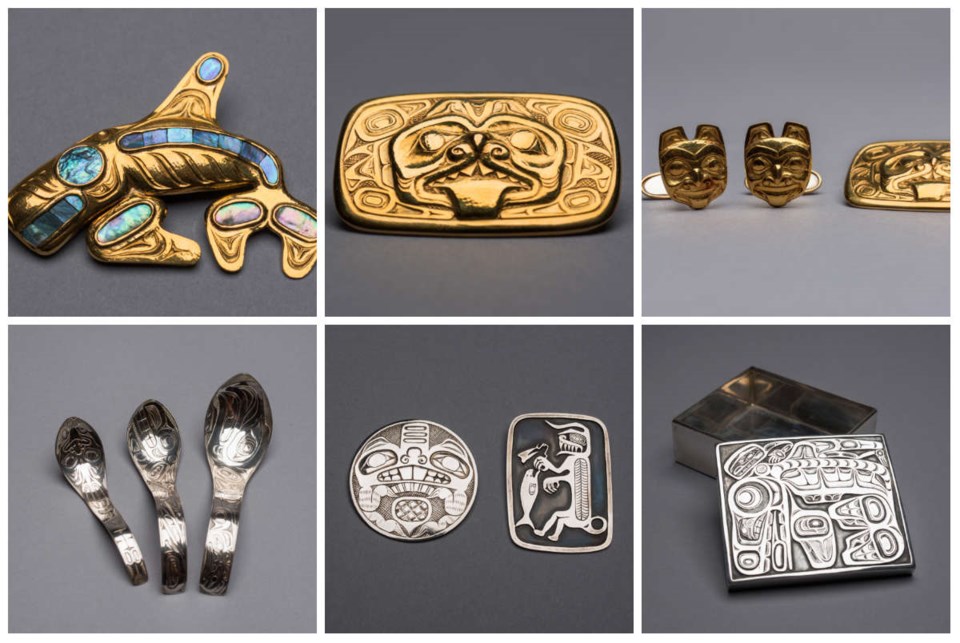 Photos Martin Dee/University of British Columbia
Photos Martin Dee/University of British Columbia
The Museum of Anthropology (MOA) at UBC has received a donation of Northwest Coast art from the late art collector Margaret "Marmie" Perkins Hess. A selection of the work is now on display at the museum.
The Hess collection features early works from Haida artist Bill Reid including masks, a gold brooch, silver box and an argillite figure. Carvings from Victoria-based artist Henry Hunt are also included in the collection, which is worth $1.1 million.
Karen Duffek, curator of contemporary visual arts and Pacific Northwest says Hess developed relationships with Indigenous artists that became important in building recognition for Northwest Coast art.
"She was working at the time when the Northwest Coast contemporary art market was really beginning and needed people like her to support them in the commercial gallery network and promote their work," Duffek says. There are 104 pieces in the collection in total -- some of which are unnamed.
"It’s a wonderful surprise to see all the great pieces, and that they’re back here on the coast for people to study,” says Haida hereditary chief James Hart who worked with Bill Reid and carved the Respect to Bill Reid pole behind MOA.
Hess operated Spencer Creek Ranch in Calgary for most of her life and died on September 2, 2016 at the age of 100. She was an avid art collector and founded Calgary Galleries in 1970 as a platform to showcase Indigenous works.
“UBC is honoured and delighted that Margaret Hess has entrusted MOA with this remarkable collection of Indigenous art,” says UBC president Santa J. Ono in a release. "These works will not only enhance MOA’s collection of Northwest Coast art, but will foster greater awareness and understanding of Indigenous cultures for our campus community, museum visitors and the wider B.C. community.”


